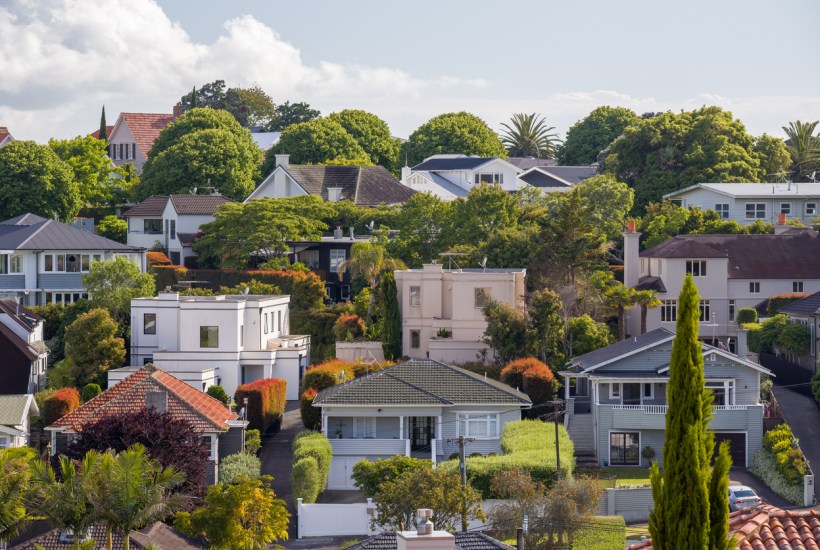It may be difficult to imagine a housing crisis more dismal than the one Britain is experiencing right now, but New Zealand’s has come pretty close. One survey of the world’s most advanced economies showed that NZ was the ‘most vulnerable’ in the world for the less well-heeled to buy homes. Despite this, however, the Antipodeans could yet emerge in better long-term shape.
At the very least, housing will no longer be a point of serious difference between New Zealand’s Labour party government and its National party-led opposition when the country has an election this October. Both major parties have put aside their usual differences to produce what both believe is a residential roadmap out of the morass.
This highly unusual display of bipartisanship will give ‘homeowners, councils, investors and developers greater certainty’, the government has promised. Their conservative foes seem to agree.
This has been a long time coming. Ever since the global financial crisis 15 years ago, New Zealand’s property market has been an unpleasantly divisive subject. In the ten years up until 2022, median house prices soared by more than 130 per cent, far more than any corresponding rise in income. Political anxiety rose apace.
Leaders have struggled to find a solution to the chronic issue of population growth consistently outstripping housing supply. Early on in her premiership, the recently departed Jacinda Ardern tried to make housing affordability her own flagship policy, announcing that her Labour government would oversee the construction of 100,000 low-cost new houses earmarked for lower-income buyers within a decade. In the event, what the £1-billion plan known as KiwiBuild delivered was more in the order of rats and mice, with the programme scrapped in 2019 for being ‘overly ambitious’.
By the time Ardern abruptly stepped down from office, only about 1 per cent of the target figure had been met. In the meantime, the market soared into the economic sun on the plastic wings of easy credit, historically low interest rates and a captive domestic market during Covid.
The sudden collapse of this gilt-edged market late last year only seemed to create more headaches. Indeed, house prices are currently down anything up to 20 per cent on what they were 12 months ago and most new owners are stuck with negative equity.
So far, so familiar. But policymakers in New Zealand evidently believe they have found a way out of the same undersupply issue that has so bedevilled their British counterparts.
The two major parties worked together on the new Resource Management Amendment Bill, the aim of which is to introduce an easier mixed-zoning situation across the country. Unlike the earlier KiwiBuild fiasco, this would not have the government stepping in as a kind of national Bob the Builder — turning the nation’s urban centres into ‘Coronation Street terraced homes’, as one critic put it with a shudder — but rather encourage the market to ride to the rescue. The bill became law in late 2021.
The legislation itself actually builds on the impressive success already registered in the country’s largest city, Auckland, where more than one-third of Kiwis live and housing demand has always been the keenest.
In 2016, the city scrapped most of its multifamily housing prohibitions with the Auckland Unitary Plan. The plan — effectively a rezoning initiative — removed single dwelling restrictions on three-quarters of residential land and trebled the number of dwellings that could be built within residential areas.
According to a study authored by Ryan Greenaway-McGrevy and Peter Phillips from the University of Auckland’s Economic Policy Centre, there’s now ‘strong evidence’ that easing the zones in the country’s urban heartland has definitely improved the lot in New Zealand’s largest city.
More than 26,000 new dwellings have since been created, which is the equivalent of more than 100,000 new dwellings popping up in London.
That impressive tally may possibly slow for a bit as the local council attempts to balance the plan’s intention with environmental concerns.
Little matter. With net migration now running at a loss — with young graduates and frustrated professionals heading for greener economic pastures abroad — ‘we could be looking at an oversupply issue, rather than our decade-long undersupply issue’, Greenaway-McGrevy believes.
In the meantime, the government of New Zealand now readies itself for a national poll where for the first time in 15 years fixing the housing supply issue will no longer be a point of difference between the parties. The hope must be that the electorate feels reasonably convinced. The benefit could be that other countries draw a lesson here and there from the Kiwis.
Got something to add? Join the discussion and comment below.
Get 10 issues for just $10
Subscribe to The Spectator Australia today for the next 10 magazine issues, plus full online access, for just $10.





















Comments
Don't miss out
Join the conversation with other Spectator Australia readers. Subscribe to leave a comment.
SUBSCRIBEAlready a subscriber? Log in